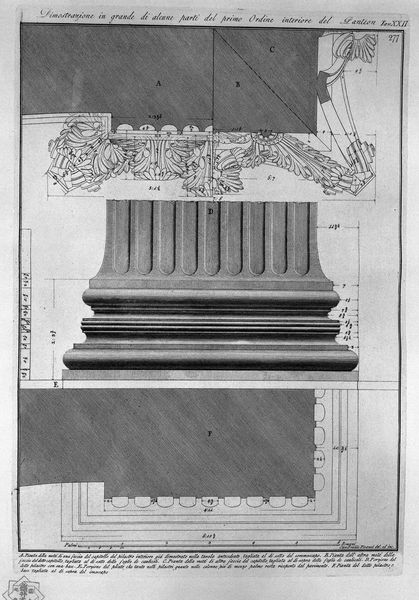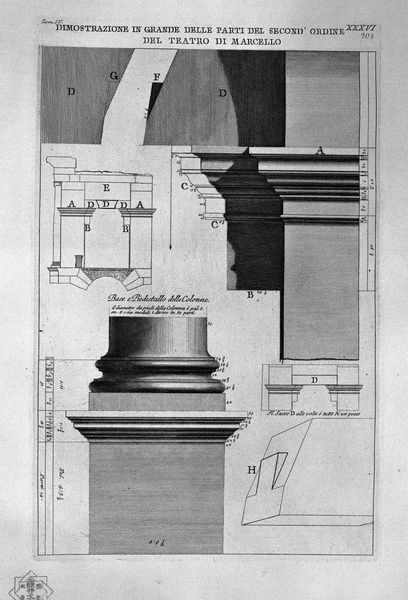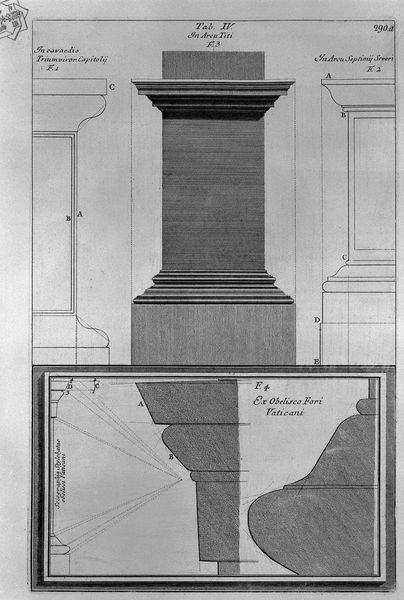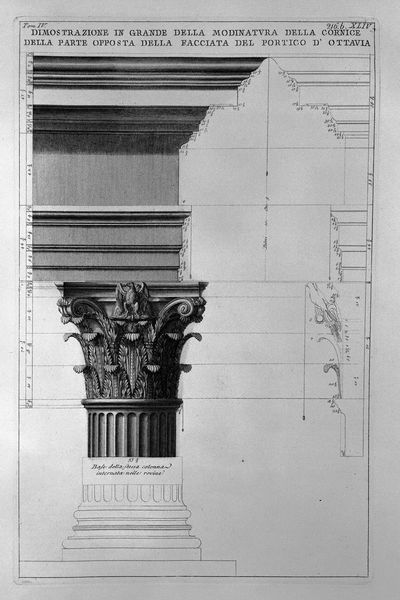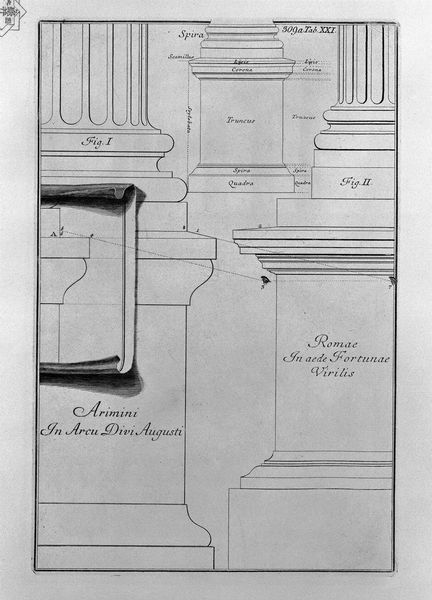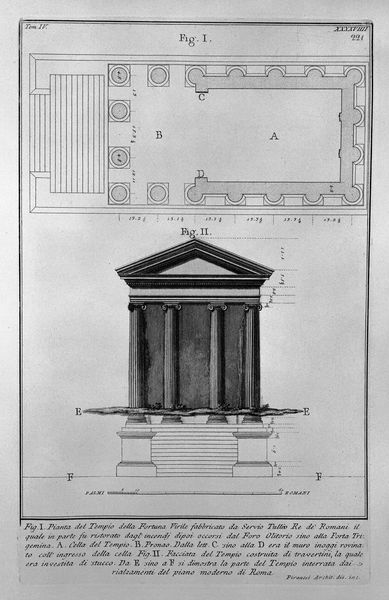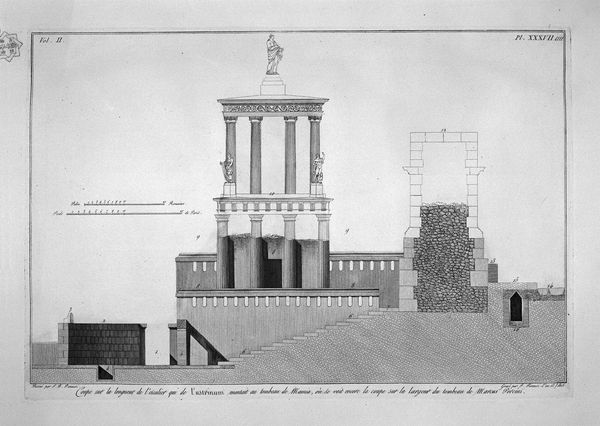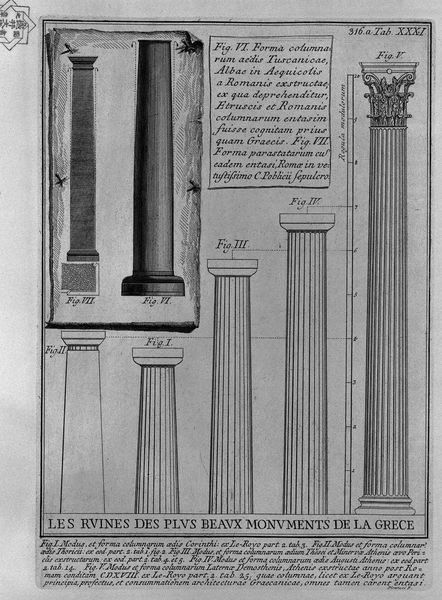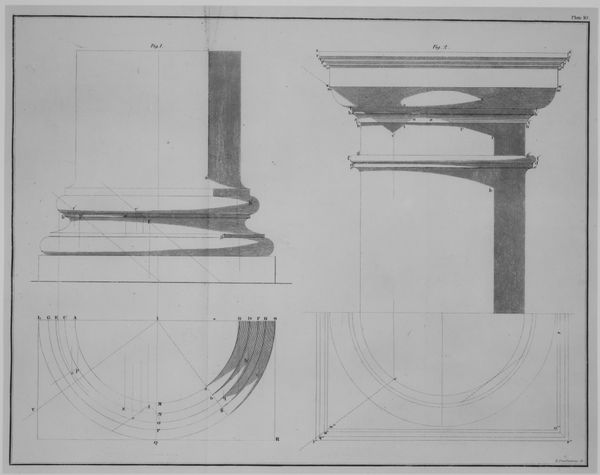
The Roman antiquities, t. 4, Plate LI. Vista in large parts of the Temple of Fortuna Virile.
0:00
0:00
drawing, graphic-art, print, engraving, architecture
#
drawing
#
graphic-art
#
neoclacissism
# print
#
old engraving style
#
perspective
#
geometric
#
ancient-mediterranean
#
engraving
#
architecture
Copyright: Public domain
Editor: This engraving by Giovanni Battista Piranesi, titled "The Roman antiquities, t. 4, Plate LI. Vista in large parts of the Temple of Fortuna Virile," really showcases incredible detail, focusing specifically on the architectural elements. It feels very technical, almost like a blueprint, but with a clear artistic intention. What jumps out to you when you look at this? Curator: The etching embodies a deep engagement with the processes and labor embedded in architectural representation and the making of buildings in general. It moves beyond simple documentation, interrogating how architecture functions both materially and as a cultural construct. Note how the materiality of the built form – the very stones and construction methods – are placed front and center, challenging conventional fine art boundaries. Editor: So it's about more than just the beautiful temple; it's also a social commentary on its creation and the materials? Curator: Precisely. It probes into who built it, using what resources, and what the implications were. The print itself is also an object of labor, from its initial concept to distribution and, ultimately, consumption. It’s crucial to consider this print not as a mere aesthetic artifact, but as a testament to these historical processes. Does it challenge our preconceptions about "art"? Editor: It definitely does. I initially saw just a historical document, but understanding the materiality and the social aspects adds another layer. Curator: Seeing it through a materialist lens makes you consider the social, economic, and political conditions necessary for the production of both the temple and this printed image. How labor, consumption, and ideology play critical roles. Editor: I see that now. Focusing on the materials really highlights that interplay. Thanks, this has definitely expanded my perspective on art interpretation.
Comments
No comments
Be the first to comment and join the conversation on the ultimate creative platform.

